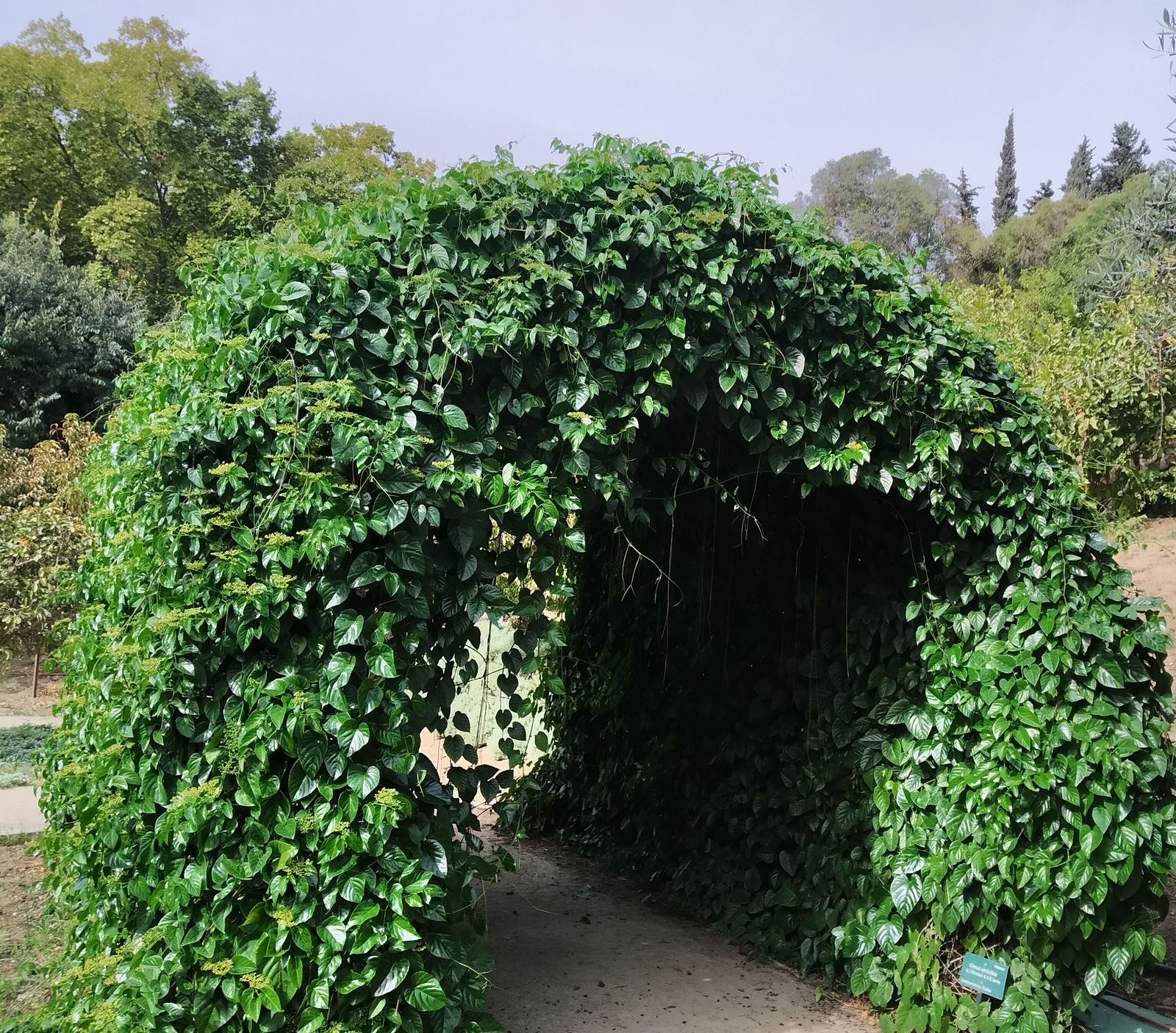Cissus verticillata
Scientific name: Cissus verticillata (L.) Nicolson & C.E. Jarvis
Family: Vitaceae
Common name: Princess vine, Possum grape
In the garden of the senses of La Concepción some arches were installed to place different species of climbers. One of them has grown spectacularly. Its distribution area is very wide, from Florida and all over South America except Chile and Argentina. There it is known as bejuco ubí or tripa de vaca, among other names. Cissus derives from a Greek word meaning ivy, and verticillata refers to the fact that it has whorls (said of a plant in which several organs emerge from the same node).
This shrub can be deciduous in cold climates. Its twigs are usually hairy and when young are slightly succulent, becoming woody with time. At the end it has forked tendrils that help it to climb whatever support it can reach. The leaves are more or less oval, with a heart-shaped base and approximately 12 x 6 cm.
Possum grape flowers and fruits for a long period. The flowers are grouped in umbelliform inflorescences, unnoticed as they are very small and yellowish green; the fruits are globular berries of no more than one centimetre, shiny black in colour and with a seed inside. What is really impressive is the plant itself, as it covers the structure densely and lets aerial roots with a reddish tip hang down.
It is a species to which many medicinal properties have been attributed since ancient times, it regulates glucose levels, is antibacterial, anti-inflammatory, antioxidant, digestive and hypotensive. It is used both in decoctions and externally in poultices, but its use should be avoided in pregnant women, children and people with other illnesses.

